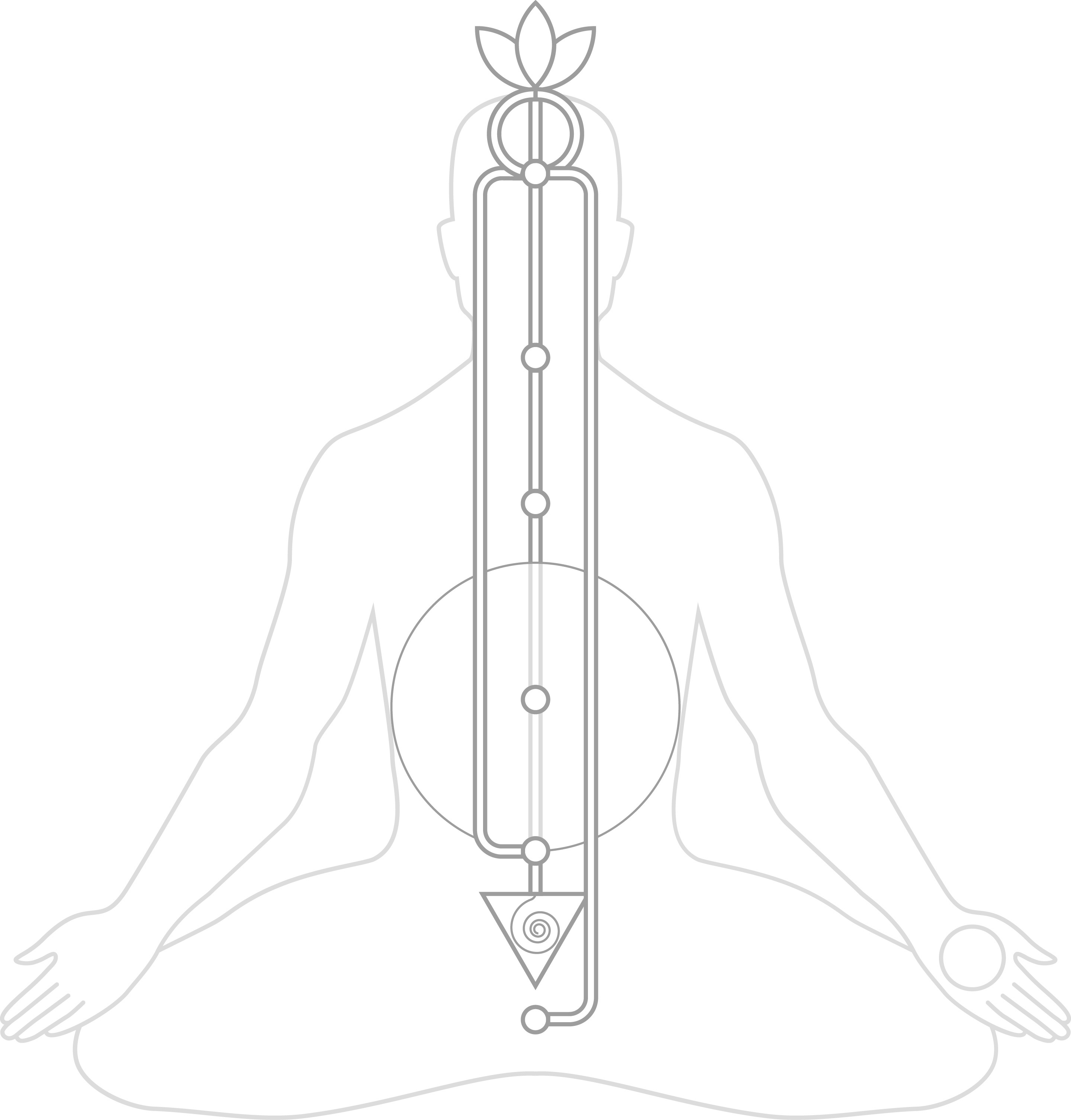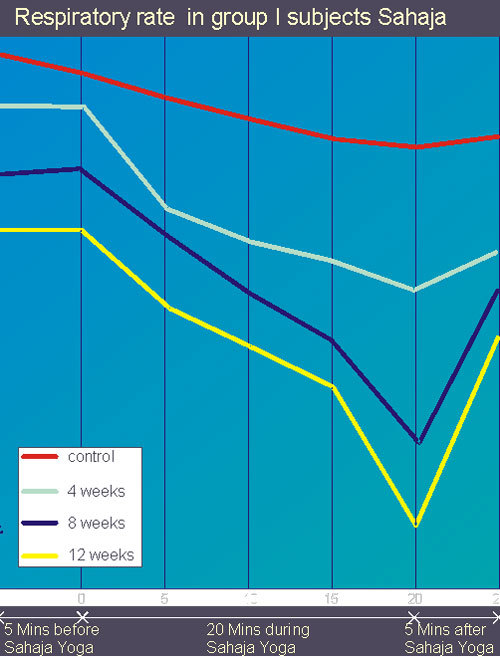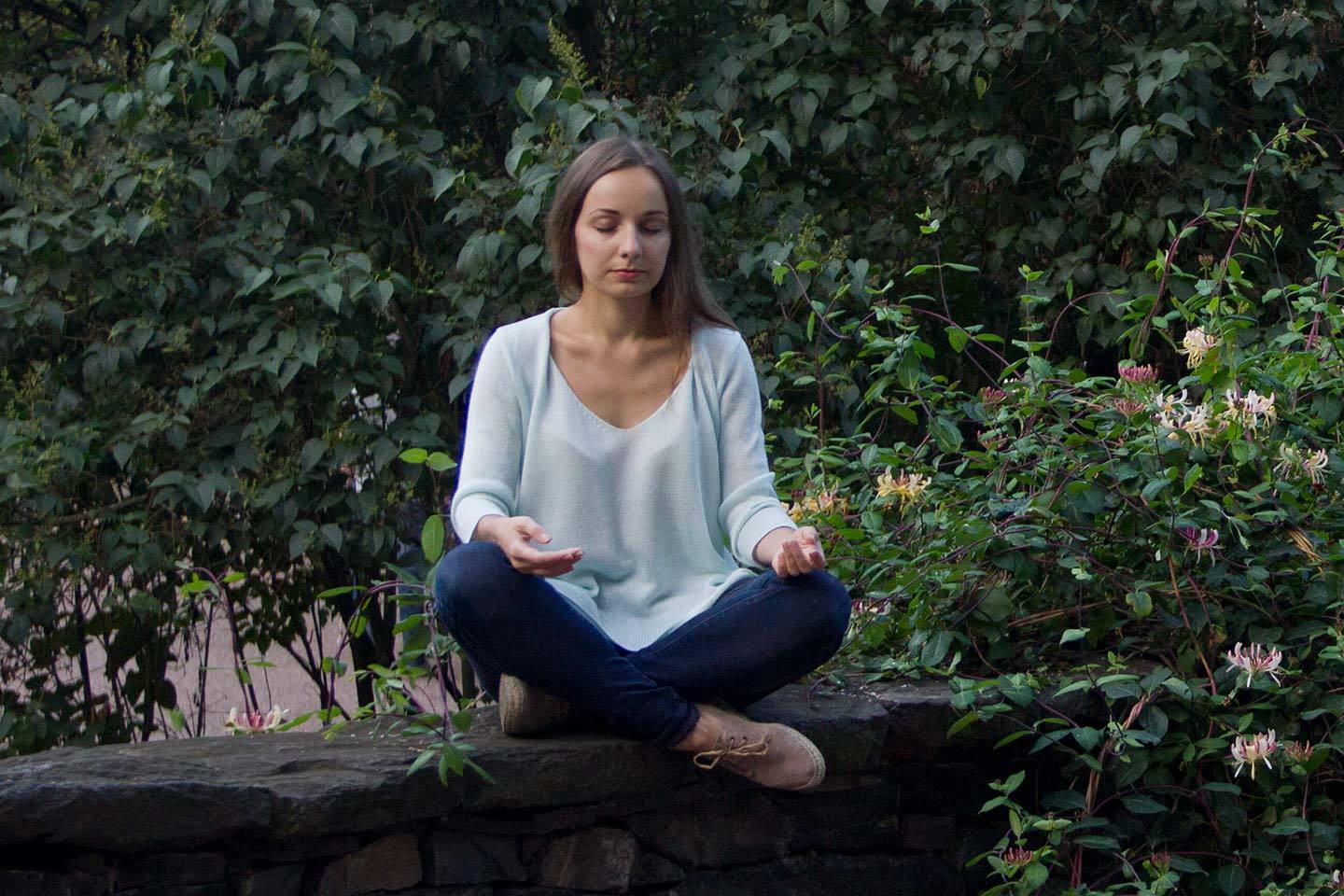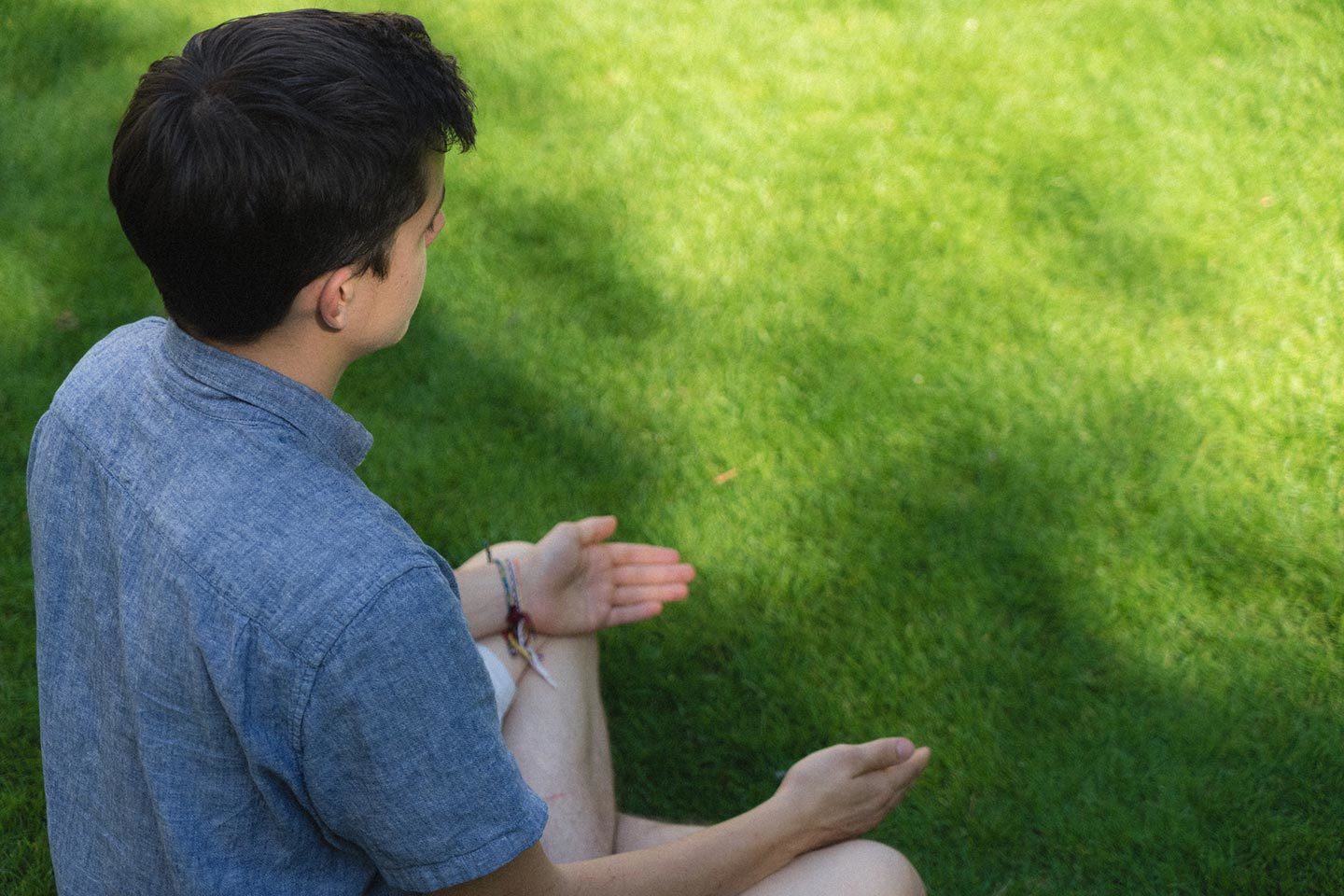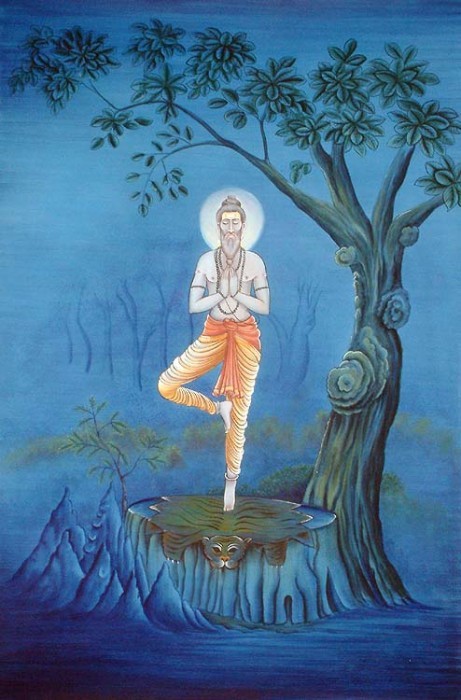Meditation has become a widespread practice, available for people of all ages and backgrounds to achieve inner peace and well-being. Through simple techniques you can experience a state of meditation along with benefits of reduced stress and spontaneous joy. Here, we offer the complete guide to understanding what meditation is and how it can help you.
Meditation Definition
Clearing your mind
Quite simply, meditation is a state of thoughtless awareness, reached when the mind is silent, yet alert. It is not an act of doing, but is a state of being. Being in the present with profound peace, free from the incessant activity of the mind.
You can be in meditation at any moment, whether you are seated in a lotus position or going about your daily activities. A clear mind allows you to achieve a higher awareness, to witness the present moment and achieve your true potential.
Meditation debunked
Meditation is often associated with practices that help you to feel more calm, but are rarely a true experience of meditation. Engaging in such practices may provide a temporary reprieve from stress and thoughts, but do not have a profound lasting effect on our well-being.
For example, some techniques involve concentrating on a particular sound, object or idea. While these practices are effective in bringing the attention inside, they still engage the mind, rather than allowing the mind to be clear.
Methods which employ physical exercises such as postures or breathing help to relax the body and establish a peaceful mood, but they are not sufficient to bring about a state of lasting thoughtlessness.
Practitioners of certain types of meditation report sounds, voices, colours or even involuntary movements. However, these are symptoms of a loss of control over some part of ourselves and prevent one from enjoying the pure state of silence within.
Meditation vs. mindfulness
Mindfulness meditation is a practice which involves paying close attention to the present moment without any judgment. The technique is viewed as a training of the mind in order to promote mindfulness during the day. It does not, however, place any emphasis on emptying the mind.
While the practice of mindfulness may help you to distance yourself from negative thoughts and emotions, it does not remove them, nor does it prevent them from occurring. The training of the mind is in fact a mental effort, and therefore does not bring the relief of a silent mind.
It is true that many report the personal benefits of mindfulness, but the practice still lacks convincing empirical evidence and is subject to hype and misinformation. Furthermore, in some cases the continuous focused attention on one’s thoughts and feelings has led to a state of paranoia and anxiety.
Meditation, on the other hand, spontaneously cleanses the mind of negative thought patterns. The state of thoughtless awareness brings with it a sense of peace and detached joy. Thus the occurrence of negative thoughts and emotions is naturally reduced without effort. Even experiencing a few seconds of a pure meditative state can have astonishingly long-lasting effects.
Why Meditate
The power of meditation
Modern life is full of obstacles which prevent us from experiencing a joyful, peaceful state throughout the day. Stress, anxiety and depression are just a few of the symptoms of lives overloaded with thoughts.
Meditation has the power to relieve you of all weights and tensions on a mental, emotional and physical level. Thus, through simple techniques your well-being and overall enjoyment of life can be vastly improved.
In a state where you are free from worries and insecurities, your true nature is revealed. Like a child you can easily express and receive love, providing fulfilment for yourself and those around you.
Inner growth
Everyone has the potential to become the best versions of themselves; all you need are the tools to achieve this. Qualities which you’ve long aspired to, such as confidence and or creativity, are naturally occurring in all human beings but some more than others experience mental or emotional barriers that inhibit us from expressing these qualities.
Through a natural and spontaneous process, meditation goes right to the core of the inner blockages which prevent us from becoming the person we want to be. By relieving the tensions that are occurring on the most subtle levels of our central nervous system (that we are often unaware of) our true potential is revealed.
Many practitioners of regular meditation report their great surprise at the personal transformation which they experience, often noting the ease and rapidity of their inner growth. More importantly, it is an enjoyable process which does not involve any mental analysis. While introspection is important to achieving personal growth, it merely involves self-observation of our meditation experiences rather than any form of psychotherapy.
The Benefits of Meditation
Meditation is the solution for many common problems which disrupt our daily lives
Meditation for stress
Stress occurs when we are unable to relieve our minds of thoughts about the past or the future and focus on what is happening right now. We can often come up with many justifications for allowing our mind to wander: this thing is very important; if I don’t think about it, who will?
But ultimately, stress does not help us to achieve anything now. An overworked mind is not efficient or dynamic. What's more, it has a direct detrimental effect on our physical and emotional well-being.
Emptying the mind and removing stress from your system allows you to focus on what needs to be done now. Thus you can steadily yet effectively move towards achieving our goals while maintaining balance.
Try this short guided meditation to calm your mind and reduce stress.
Meditation for anxiety
Anxiety hits when we are nervous or apprehensive about something with an uncertain outcome. In severe cases it can lead to panic attacks. Whether it is studies, work or family, most things that affect our daily lives are out of our control.
Uncertainty always has, and always will be, a part of human life. However, in an ever-increasingly competitive world, the ability to cope with this fact is becoming more and more difficult. Scientific studies show that meditators are better able to cope with the anticipation of a negative event, lowering the impact of the event when it occurs. [1]
Meditation provides a sense of security and detachment which soothes feelings of anxiety and fosters an outlook of acceptance. Therefore when unexpected outcomes or changes arise, you are in a state which allows you to deal with the new circumstances, free from the weight of anxiety that might have preceded them.
Try this short guided meditation to relieve anxiety.
Meditation for depression
Depression is much more than just feeling a bit down and unmotivated. Sufferers of depression experience recurrent periods of negative moods which may last for days, weeks, months or even years. Symptoms of depression include sadness, anger, guilt, fatigue, lack of self-worth and a general lack of interest in day-to-day life.
In some cases depression is triggered by a particular negative event, such as the loss of a loved one or redundancy, but often it is hard for a sufferer to pinpoint exactly why they’ve lost the joy in their life and escape the cycle of negativity.
Meditation allows you to detach from any negative thoughts and emotions which are weighing you down, and naturally corrects the internal imbalances which are causing them to occur. Studies show that when we reach a state of mental silence we activate the limbic area of the brain to release neurochemicals which make us feel love and joy [2].
Free from your thoughts you can experience a spontaneous state of bliss which does not rely on any external stimulus.
Try this short guided meditation to lift depression and experience pure joy.
Meditation for sleep
Having difficulty dropping off at night? You’re not alone. Around 30% of the US population report some level of insomnia, attributed to stress, anxiety or depression. Often a sufferer of insomnia is unaware of exactly what is causing the lack of sleep, leading to further frustration and worry.
While lying awake at night is an unpleasant experience in itself, it is the fatigue during the day which affects our lives most. Effects range in severity from lack of focus, irritability and mood swings, to high blood pressure. In cases of insomnia, an unknown stressor can lead to a deterioration in physical, mental and emotional well-being and greatly reduce quality of life.
Meditation not only helps to relieve the symptoms of insomnia, but also goes straight to the cause of the condition. By removing subtle imbalances and stresses on our central nervous system, we allow ourselves to completely relax our mind and body. Even a few seconds of a true state of meditation in thoughtless awareness can be enough to ensure a good night’s sleep.
Try this short guided meditation to facilitate restful sleep
The Science of Meditation
Mediation is an ancient practice, often associated with spiritual, religious or cultural beliefs. In recent years the direct positive effects of meditating have also been verified scientifically.
Meditation and the central nervous system
The practice of true meditation works on our central nervous system, responsible for all physical, mental and emotional activities within us. By correcting imbalances within this system, we can remove any obstacles which prevent us from experiencing a state of mental silence.
The sympathetic and parasympathetic nervous systems
The autonomic nervous system governs involuntary responses within us and is generally divided into the sympathetic and parasympathetic nervous systems. As shown, the subtle body is divided into three channels: left, right and center which physically manifest as the autonomic nervous system. The left and right channels form the sympathetic nervous system responsible for ‘fight or flight’ responses in case of potential danger, throughout the day. The central channel is the parasympathetic nervous system, which governs our ‘rest and digest’ responses, usually activated when we sleep.
The aim of meditation is to reduce activity in the sympathetic nervous system, i.e. remove stress and imbalances, and to activate the parasympathetic nervous system, bringing complete rest to the mind and body. A truly meditative state, where the mind is completely silent, has been scientifically proven to activate this system more than an average night's sleep.
Energy centres
Another part of the central nervous system which directly relates to the subtle being, is the nerve plexuses. Energy centres are placed along our spine where the nerves intersect. These plexuses govern specific functions of our brain and body, and it is for this reason that energy centres - ‘Chakras’- are associated with certain qualities, determined by the nerves which meet there.
By guiding the living energy within us to the centers where we are experiencing a problem, we can naturally and effortlessly address imbalances of the most subtle nature.
This balancing effect takes place when we connect to the dormant energy that lies at the base of our spine, called in Sanskrit as ‘Kundalini’. The Kundalini nourishes and cleanses our system when it is awakened. This energy has been mentioned in all ancient cultures and religions, and its existence can be experienced through meditation.
Discover more about the central nervous system.
The Effects of Meditation
The effects of meditation are far-reaching and multi-faceted.
Effects of meditation on the mind
Meditation is an incredibly powerful and efficient tool for clearing your mind. Thoughts come when we are reflecting on the past, or considering the future. Meditation silences the mind and brings us into the present moment, allowing us to simply witness without reacting.
Thoughts come through the mind as waves, and so the more active our mind is, the smaller the gap between one thought receding and another thought approaching. The regular practice of meditation extends this gap until we are able to experience noticeable periods where we have no thoughts at all.
Just a few seconds of being completely thoughtless is enough to entirely relax the mind, the effects of which last beyond the meditation session. With repeated periods of thoughtlessness, the mind actually becomes less prone to overactivity. A calmer mind reduces occurrences of worrying, stress and anxiety.[3]
Another characteristic of a calm mind is joy! We experience pure joy when we are not thinking about anything, as we feel completely fulfilled. Although meditation is a soothing process, many practitioners report the sensation of bubbling joy within at the moment of thoughtless awareness.
Effects of meditation on the body
On the physical level, meditation can serve as a great source of relief from any tensions, pains, heaviness or agitation.
In a controlled randomised test, subjects practising Sahaja Yoga meditation saw a consistent fall in their respiratory rate during meditation. The effect was more pronounced the longer the individual had been practising meditation.
When meditation is practiced regularly, more long-term imbalances can be corrected by working on our central nervous system. Problems such as hypertension, insomnia and asthma can all be significantly reduced or even eradicated by going to the very core of the problem, as opposed to merely treating the symptoms.
Meditation is also a great tool for balancing our energy levels and bringing the body into a more centered state. When we find ourselves feeling tired, heavy or lacking in energy, meditation can refresh our system and tap into energy we didn’t know we had. On the other hand, when we are feeling restless, agitated or unable to relax, meditation brings calm and relief to the body.
Effects of meditation on emotions
It can sometimes feel like we have little control over our emotions, but meditation gives us the ability to naturally and spontaneously cleanse ourselves of negative emotions and foster positive emotions. By working on the central nervous system, which governs all of our emotional activity, we can ensure ourselves a healthy emotional state without any particular effort or analysis.
Emotions are often difficult to articulate or identify, but through meditation we can easily gauge our emotional state and correct any imbalances. Through the regular practice of meditation we can become sensitive to the subtle blockages on our central nervous system which prevent us from feeling joyful, inspired, secure and open-hearted. Over time we can actually strengthen our energy centers, as illustrated by studies show that meditators are less susceptible to negative emotions, and more naturally prone to positive emotions.[1]
Experiencing negative emotions is a natural part of everyday life, but without an effective way of dealing with them we can get stuck in a negative emotional cycle. In reality, when we experience sadness, insecurity, guilt, fear or anger, we are not experiencing our real selves. Meditation allows us to detach from these emotions, leaving us free to enjoy our true nature.
Meditation and Health
Meditation provides a holistic approach to health as it impacts all areas of our wellbeing. Often the health problems we have are not confined to the physical, mental or emotional symptoms that we are consciously aware of. For example, many aches and pains we feel on the physical level are actually caused by mental or emotional stress which causes blockages on the central nervous system. Therefore merely treating the physical symptoms is often an ineffective approach.
By connecting to our subtle system we can get an overall picture of our wellbeing, and address any issues from the root of the problem. The more frequently you experience the state of mental silence, the more sensitive you become to the activity on your central nervous system. This allows you to detect small imbalances within and gently correct them before they lead to any long-term issues.
One of the greatest benefits of using meditation to keep yourself healthy and balanced is that it is completely natural and costs nothing! One practice which focuses on mental silence is Sahaja Yoga meditation, which contrary to other forms of medication, treatments and therapies has no known negative side effects. It is safe and suitable for everyone, of all ages and medical backgrounds. Anyone can try out Sahaja yoga online guided meditations for free, and Sahaja Yoga meditation classes are offered in hundreds of cities all around the world - always 100% free of charge.
Meditation Studies
Studies conducted on the effects of Sahaja Yoga meditation have found it to have a significant impact on mental, physical and emotional health.
While there is a lot of self-reported evidence which supports the beneficial effects of meditation, the body of rigorous empirical evidence to back it up is surprisingly small for many forms of meditation. As pointed out by Dr Ramesh Manocha, this is mostly due to inaccurate ideas of meditation as an activity ‘aimed at eliciting a state of relaxation’ which lead to conclusions where meditation has little difference in impact than simple rest.
However, where meditation is taken as a state of mental silence, such as in Sahaja Yoga meditation, it has significantly greater results than comparative techniques. Clinical studies have documented beneficial effects of Sahaja yoga meditation for patients with epilepsy, essential hypertension, asthma, menopausal symptoms, attention deficit-hyperactivity disorder, anxiety and work-related stress.[5]
Furthermore, studies of the effects of Sahaja Yoga meditation on the brain show a pronounced change in brain-wave patterns, shifting from the beta waves of aroused, conscious thought to the alpha and theta waves that dominate the brain during periods of deep relaxation [6]. More importantly, the long-term practice of this meditation have been proven to increased grey matter in regions of the brain which are associated with sustained attention, self-control, compassion and interoceptive perception. [7]
Meditation Exercises
Basic meditation
The first exercise when you start meditating is to awaken the living energy within you. This energy has been referred to in practically every ancient civilisation, called in Sanskrit as ‘Kundalini’, and it lies within the sacrum bone at the base of the spine.
When this energy is raised through the energy centers along the spine and pierces the final energy center at the top of the head, we are brought spontaneously to a state of mental silence. This is the moment of true meditation.
The simple and natural process of awakening this energy is commonly called as Self Realisation. When we disconnect from our thoughts we experience the true nature of ourselves and the world around us, beyond our mental constructs and conditionings.
Experience your Self Realisation now with this simple guided meditation.
Chakra Balancing
Once you have awakened your inner energy through Self Realisation, you get connected to the network of subtle energy centers- or Chakras - corresponding with your central nervous system. It is through the gentle cleansing of the central nervous system that we can balance our chakras, therefore balancing our mental, emotional and physical activities.
The Kundalini is a nourishing energy which when guided towards an energy center will remove any tensions or blockages there, bringing that center into balance. These blockages occur when either physically, mentally or emotionally we are out of balance, causing a disturbance on the subtle level. Therefore, through meditation we can bring our whole system into balance without having to self-assess or mentally analyse.
Balancing your chakras not only removes any blockages, but also naturally nourishes good qualities within us. For example, by balancing our heart chakra we can automatically feel more secure and able to love unconditionally. Through the regular practice of meditation we become more and more sensitive to the activity on our energetic level, empowering us to keep our systems in balance and strengthen our energy centers.
The greatest benefit of a balanced subtle system is that it enables us to experience longer and deeper periods of thoughtless awareness. This is the real aim of balancing our chakras, as the state of thoughtless awareness is a truly sublime experience which brings us to a greater awareness of ourselves and gives an overall pure joy and fulfilment of everyday life.
Discover more about the Subtle System
Daily meditation
Meditating on a daily basis is key to keeping your system in balance. It might sound like a big commitment, but just a few minutes of meditation everyday is enough to kickstart the snowball effect of improving your inner state. The more often you reach the state of thoughtless awareness, the less likely you are to get out of balance in your daily life, and therefore the easier and deeper your meditation experience becomes.
It can be hard at first to incorporate a new activity into your routine, but the Kundalini is like a muscle - the more you use it the stronger it becomes. It is suggested that it can take up to a month to establish a new routine before you stop thinking about it.
At first a bit of discipline might be required, but the more you experience the benefits of meditation, the easier it becomes. Once your system gets used to this daily relief of the mind, meditating daily isn’t something you even have to think about, like brushing your teeth.
Meditation Tips
Whether you’re completely new to meditation, or have been practicing for a while, here are a few tips that can really boost your experience and help you to reach the state of thoughtless awareness.
When to meditate
Experienced practitioners report that their best meditations usually occur when they get up in the morning, or just before bed.
When you first wake up your brain hasn’t had a chance to get started yet, so you can reach thoughtless awareness more easily than when you have already started the day’s activities. In the evening, when you haven’t got anything left to do, a few minutes of meditation is a great way to cleanse yourself of all the day’s thoughts and ensure yourself a good night’s sleep.
Finding the right time for you to meditate might require a bit of experimentation, but give any new routine at least a week to see how you feel. The mind and the body can take some time to adjust, so keep at it for a while before you try something else.
Where to meditate
While it is possible to go into thoughtless awareness literally anywhere you are, it is true that some environments can help this process more than others.
When meditating at home, try to have a dedicated space which is free from noise and clutter. If you have lots of housemates or family members your bedroom can be a great escape, or sometimes your living room can be more free of personal mess. The most important thing is that you feel comfortable and are unlikely to be disturbed.
Outdoor meditation can be a very special experience, as it allows us to be more connected to our natural surroundings. Directly sitting on the ground during meditation is especially cleansing, as the earth element absorbs negative energies from within us. Breathing in fresh air also helps to calm the body and get oxygen to the brain. If you live near the sea or a river, dipping your feet in the water while meditating is a great way to release excess heat and stress.
Music for meditation
Music can be a great aid to your meditation experience. Not only does it set the mood and help to bring our attention into the present, but also the vibrations of each sound can actually be perceived on the central nervous system. This is why some genres of music are more conducive to a meditative state than others.
Having a good selection of meditation music on demand is a great way to enable you to have a quick session wherever you are. At work, in the park, on the go - just plug in your headphones and let the world fade away
We’ve curated a selection of music specifically designed to elevate your meditation experience.
Group meditation
Meditating in a group provides a huge boost to your individual experience. When a whole group has their attention within and are together experiencing thoughtless awareness, the energetic impact can be much greater than when you are doing the same exercise alone.
Attending a local class not only deepens your meditation experience but also provides the opportunity to get personal attention from experienced practitioners and ask any questions you may have. Sharing your experiences with others is a great way to improve your understanding of the subtle mechanisms within us, and to connect with other people on a higher level than normal day-to-day interactions.
A local weekly class can also serve as a good source of motivation to encourage you to keep up your daily meditations at home. Get inspired by others’ experiences and make new friends with common goals.
Meditation and Religion
Meditation in various forms has long been associated with religious practices as a means of connecting with a higher consciousness and experiencing spiritual liberation, often originating from the East.
The first appearance of the practice of meditation in written form is in around 1500 BCE in the Vedas, the ancient Sanskrit texts which form the basis for Hinduism. The ultimate goal of meditation, according to Patanjali, the author of two key Hindu texts including the Yoga-Sutras, is the destruction of ignorance and the realisation of the true nature of the self.
Meditation is also a key practice in Buddhism as a means of enlightenment. Here, the main aim of the meditator is to take control of their mind to become more peaceful, focused and aware.
In Sufism, a strain of Islam, meditation is called murāqbah and involves the individual watching the heart to gain insight into the heart’s relation with its creator and its own surroundings. The objective of this observation is to rid oneself of baser characteristics and develop a higher personality.
Even in most religions with Western origins, such as Christianity and Judaism, there are quiet periods of contemplation, although there is no emphasis on going thoughtless as such. On the contrary, most use this time as an opportunity to focus on specific thoughts and reflect on their meaning, with regards to their relationship with God.
While meditation appears as a part of religious practices worldwide, in itself it is not a religion. Religion can be seen as connecting to the Divine through the experience of someone else, and is mainly founded upon belief. Meditation, on the other hand, is focused on the experience of the individual, and gaining knowledge from within yourself.
Meditation and Spirituality
Spirituality is an often misperceived concept, which gets mixed up with ideas of religion or spiritualism. In reality, spirituality is something that practically everyone can relate to as it embodies the search for the experience of one’s true nature and meaning in life.
Meditation is strongly linked to spirituality as it enables the meditator to detach from their thoughts and emotions to connect to their inner self - or spirit -, which is constant and immoveable. The experience of one’s true self brings a deep sense of fulfilment and purpose, which is not attached to any material ideas of success or contribution.
The key word in understanding meditation as a way of pursuing spirituality is experience. Where religion is a doctrine given to you by someone else, and psychology offers mental analysis, meditation enables you to actually feel inside what is the true nature of your being.
“if you are a scientist, then you must keep your mind opened out. Then when you listen to my hypothesis, then you can experiment with it. Anything that can be experimented with is a scientific thing. You can see for yourself that whatever I’m saying is true or not.”
Shri Mataji, Founder of Sahaja Yoga, Public Program in London, 1978
This is why it is often suggested that one approaches meditation like a scientist, with an open mind, and treat the whole experience as an experiment where you merely observe the results. This way you can really connect with the part of yourself which is not based on any mental ideas, of yourself or anyone else.
When you are free from thoughts, you can begin to understand not only yourself, but also the world around you. It’s a fact generally known that our idea of reality is based on the information that is available to us. Therefore, based on mental understanding, how can any one of us claim to have all the information required to understand the true nature of reality? Going beyond the mind allows you to surpass mental barriers and opens you to possibilities that you may have never been exposed to on a mental level.
Meditation and Yoga
While many associate the term ‘yoga’ with a series of postures and exercises which increase physical strength and flexibility, the modern-day activity as we know it has far deeper origins. Yoga, a Sanskrit word which literally means ‘union’, is at its core a state of connection with universal reality. The exercises we are familiar with are a very small part of ancient practices designed to achieve this experiential union.
First systemised in Patanjali’s ‘Yoga Aphorisms’ c. 500 BC as a combination of lifestyle factors, psychophysiological exercises, ethnical observances and metaphysical insights, yoga was contained within small elite groups of mystics in India for thousands of years. Those who proved themselves worthy of receiving such precious information had to undergo decades of penance and dedication before some were capable of experiencing the true state of yoga.
It was only from around 1300 CE that yoga emerged in a way that could be understood by the average person. From the centuries old practices, meditation and physical exercises were the most common elements to make it through to mainstream populations, starting in India and Japan and then spreading across the Western world in recent years.
While physical yoga has emerged as a popular part of modern fitness and lifestyle, it remains to be seen if many who practice such exercises experience the kind of lasting change in consciousness and awareness which they were originally intended to induce. Meditation, on the other hand, has a higher potential to give the practitioner the true state of union with their self and the universe, purely because of the facilitation of the state of thoughtless awareness.
This state, where the mind is completely silent yet alert, occurs when the nerve plexus at the top of the head, in the fontanel area, is pierced by the living energy or ‘Kundalini’ within us. In this moment the consciousness of the meditator goes beyond the mind and merges with the universal energy surrounding us. It is a spontaneous process which all human beings are capable of experiencing, and is therefore referred to as ‘Sahaja’, coming from the Sanskrit ‘saha’ (together) and ‘ja’ (born or innate).
Meditation and Self-knowledge
Among psychologists and philosophers alike, self-knowledge is a key aspect to finding happiness in life. The Greek philosopher Socrates found self-knowledge to be so valuable that all other pursuits are “laughable” unless one has it. Indeed, when asked to summarise all his knowledge and wisdom into one key takeaway he responded “know yourself”.
But what exactly is self-knowledge? In psychology it typically embodies the information the individual refers to when answering the question ‘what am I like?’. But where does this information come from? Often we refer to labels such as our nationality, our ethnicity, our job, our family or our interests to define ourselves, but self-knowledge means understanding the nature of ourselves as individuals - what motivates us, what moves us, and what fulfils us?
These questions can be hard to understand on a mental level, and indeed the ideas we can get about ourselves mentally can be easily influenced by our emotions and the way in which we think. Meditation gives the individual the opportunity to experience the self which is not dictated by our thought patterns, and to introspect from a detached standpoint where we are free from the influence of our thoughts and emotions, as well as the opinions of others.
Meditation also also relates directly to self knowledge by increasing sensitivity to the energetic activity on our autonomic nervous system. This activity is the cause and result of all of our physical, mental and emotional activities. Therefore by simply feeling where our energies are concentrated, we can understand what kind of person we are, and what we need in order to bring ourselves into balance and feel joyful and fulfilled in life.
References
[1] Sergei V. Pavlov et al, “Impact of long-term meditation practice on cardiovascular reactivity during perception and reappraisal of affective images”, International Journal of Psychophysiology 95 (2015) 363-371
[2] Mishra R et al, “Plasma beta endorphin levels in humans: effect of Sahaja Yoga.”, Paper presented at the “Medical Aspects of Sahaja Yoga”, Medical conference, held in New Delhi India, 1993.
[3] Manocha R. et al, “A Randomized, Controlled Trial of Meditation for Work Stress, Anxiety and Depressed Mood in Full-Time Workers.”, Evidence-Based Complementary and Alternative Medicine. Volume 2011
[4] Rai U.C. et al, “Some effects of Sahaja Yoga and its role in the prevention of stress disorders.”, Journal of International Medical Sciences 1988, 19-23
[5] Manocha R. et al, “Sahaja Yoga: Reconciling Western Science and Eastern Traditions of Meditation”, Australian Journal of Clinical Hypnotherapy and Hypnosis; Spring 2005; 26, 1/2; PsycINFO
[6] Aftanas, L.I., & Golocheikine, S.A. (2002). Non-linear dynamic complexity of the human EEG during meditation. Neuroscience Letters, 330, 143–146.
[7] Hernández, S. E. et al, (2016). Increased Grey Matter Associated with Long-Term Sahaja Yoga Meditation: A Voxel-Based Morphometry Study. PLOS One, 1-16. 10.1371/journal.pone.0150757







